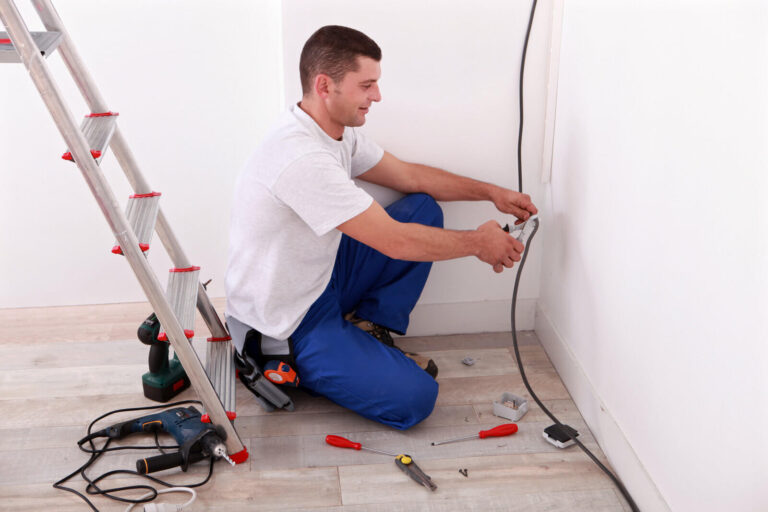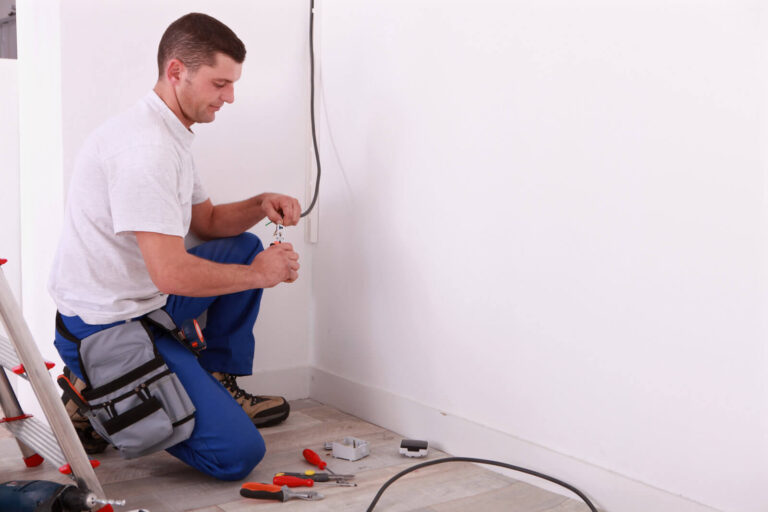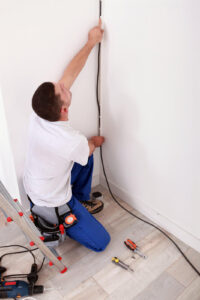Are Steel Toe Boots Safe For Electricians

Are Composite Toe Boots Better For Electricians?
Yes, composite toe boots are more ideal for electrical work. Even though the chances of your steel toe being in direct contact with your foot and being exposed AND touching a live wire are very slim, composite toes negative the risk altogether.
Another reason composite toes are better is that they are lighter. The composite toe cap can be 30% lighter than the same size steel toe cap. Over the course of a day that really adds up.
Composite toes also do not transfer heat. Many times electricians are working in the blistering heat and extreme cold. When wearing steel toe boots the steel cap will absorb that heat or cold and transfer it to your feet.
Composite toes will not.
Even though composite toe caps are not made from steel they do have to stand up to the same ASTM standards. That means comp toes can withstand roughly 2,400 pounds of pressure just like a steel toe can.
When Do Electricians Have To Wear Steel Toe Boots
Electricians have to wear steel toes when their job site requires which is going to be 99% of the time.
OSHA’s footwear requirements state: “The employer shall ensure that each affected employee uses protective footwear when working in areas where there is a danger of foot injuries due to falling or rolling objects, or objects piercing the sole, or when the use of protective footwear will protect the affected employee from an electrical hazard, such as a static-discharge or electric-shock hazard, that remains after the employer takes other necessary protective measures”
To be on the safe side just wear your safety toe boots that are either comp or steel toe and you’ll be fine.
Some safety toe boots will include other protections such as slip resistance, puncture resistance, metal tarsal protection, oil resistance, and more. Be sure to find a pair of boots that fits your job site’s requirements.
Best Work Boots for Electricians
If you’re looking for recommendations on the best work boots for electricians you’re in luck. We put together a list of the top-performing boots for electrical work. We considered durability, comfort, cost, and safety along with all of the major work boot brands on the market.

What Is The Electrical Hazard Rating
When shopping for new steel toe boots you should be looking for “Electrical Hazard” or the “EH” symbol on the box. This simply means the boots will not complete an electrical circuit to the ground and prevent you from being shocked if you step on a live wire.
There will be a prominent symbol on the box for EH and will be on the label inside the boots near the ASTM rating.
Some steel toes will have a static dissipating which is different than an electrical hazard.
Static dissipating boots discharge the static built up on your body and transfers it to the ground. Facilities like computer component handling facilities and some manufacturing plants may require static dissipating (SD) shoes.
Static dissipating boots actually conduct electricity from your body down into the ground by going through the cement and lining of your boots. To ensure this process happens correctly you should not ad any insole other than static dissipating insoles.
All static dissipating insoles will say Static Dissipating (SD) or Electrical Static Dissipating (ESD)
The price for Static dissipating boots vs EH boots is nearly identical so don’t get stingy.
When you’re shopping for new boots most job sites will only require EH boots, of course, you can ask the safety man just to double-check.
Pull-On Or Lace-Up Boots
Lace-up boots offer better ankle support and have more wiggle room as far as getting a correct fit because you can tighten or loosen them.
But again this is going to come down to personal preference. I personally enjoy not having to tie my shoes in the morning but I need that extra ankle support so I go with lace-ups. I’ve found most electricians go with a hiking steel toe type of boot rather than slip ons.
To me, comfort is the most important factor. Whatever is going to feel the best on my feet near the end of my day is what I want on my feet.

Best Work Boot Brands for Electricians
Most brands of steel toes will have good options for electricians. You just need to find ones that fit your feet well and will work well for your type of work.
- Thorogood
- Timberland
- Wolverine
- Irish Setter
- Carhartt
- Justin
- CAT
- Ariat
- Durango
Defined Heel Or Flat Soled Boots?
Electricians need to wear defined heel boots.
Defined heels help you catch ladder rungs where flat soled boots will be easier to slip off, basically its much safer than flat soled boots.
A defined heel means the heel has an approximate 90 degree angle.
Most steel toes are going to have defined heels and if a boot does not have a flat sole its probably considered defined.
Most job sites will also require a defined heel.
How Tall Of Boots Should Electricians Wear
The height of your work boots is going to come down to personal preference. If you sprain or roll your ankles often, like I do, go for an 8”. If you’re not concerned with the amount of ankle support a 6” will do just fine.
Waterproof Or Non Waterproof
- An old sock or shop rag
- Mink oil
- A yard or surface you don’t mind getting dirty
Conclusion
Steel toes are safe for electricians to use and most of the time a form of safety toe boot is required.
Composite and steel toe boots are both ASTM rated and Electrical Hazard Rated for your protection. Composite toe boots are lighter weight, made out of nonmetal materials, do not conduct electricity, and do not conduct heat or cold.
Some facilities like plants will require Static Dissipating boots. Static Dissipating and Electrical Hazard are not the same things.
SD boots release the electricity, that accumulates on your body naturally, into the ground. EH boots protect you from stepping on a live wire and being shocked.
All types of boots are great for electricians as long as they meet safety requirements. Pull-on and lace-up boots both have their advantages and disadvantages.
Lace-ups provide more ankle support while pull-ons provide more convenience of getting them on and off.
When it comes to the height of the boot it all comes down to preference, a 6″ or an 8″. 8″ boots provide even more ankle support while 6″ are easier to get on and off.
Keeping your feet dry is a very simple process. Either purchase waterproof boots or use a product to make them waterproof like mink oil or Sno-Seal
Keep these things in mind and your feel will appreciate it at the end of the day!
